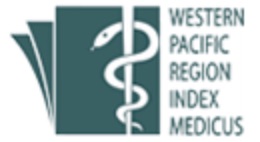Effects Of Impacted Lower Third Molar Removal On Alveolar Bone Height And Periodontal Parameters Of Adjacent Second Molar
DOI:
https://doi.org/10.31436/imjm.v16i2.1066Abstract
Introduction: The effect of surgical removal of impacted third molars on the periodontal parameters of adjacent second molar revealed inconsistent results. Some authors suggested improvement of periodontal parameters distal to second molar, whilst others demonstrated loss of attachment and reduction of alveolar bone height. This study was conducted to evaluate the alveolar bone height (ABH) and periodontal status of second molar after the surgery. Materials and Methods: Out of 42 subjects selected, 33 subjects completed the study. Only subject who had mesio-angular or horizontal impaction of third molar with available previous records of digital orthopantomogram (OPG) were recruited into the study. ABH of adjacent second molar on the previous OPG were compared with the current OPG using technique described by Krausz et al., (2005). Other paramaters such as probing pocket depth (PPD), bleeding on probing (BOP), recession (REC) were also recorded. Results: There was significant reduction (p<0.001) in mean ABH at distal of second molar between pre-surgery (4.30±1.09mm) and post-surgery (2.80±2.05mm). No significant different was found in ABH between 47 and 37 at baseline; (4.09±1.09mm vs 4.30±2.55mm) and post-surgery (3.00±2.20mm vs 2.70±2.35mm) where p<0.423. Distal sites of second molars consistently showed significantly higher mean PPD (3.76±1.32mm) when compared with mesial, mid buccal and mid lingual sites (p<0.001). Higher frequency of BOP (90.9%) were also recorded for distal sites. Conclusion(s): Within the limitation of this study, surgical removal of impacted third molars demonstrated significant reduction in ABH of second molar post surgically. Significantly deeper PPD were also recorded at distal sites as compared to other sites.
Downloads
Downloads
Published
How to Cite
Issue
Section
License
All material submitted for publication is assumed to be submitted exclusively to the IIUM Medical Journal Malaysia (IMJM) unless the contrary is stated. Manuscript decisions are based on a double-blinded peer review process. The Editor retains the right to determine the style and if necessary, edit and shorten any material accepted for publication.
IMJM retain copyright to all the articles published in the journal. All final ‘proof’ submissions must be accompanied by a completed Copyright Assignment Form, duly signed by all authors. The author(s) or copyright owner(s) irrevocably grant(s) to any third party, in advance and in perpetuity, the right to use, reproduce or disseminate the research article in its entirety or in part, in any format or medium, provided that no substantive errors are introduced in the process, proper attribution of authorship and correct citation details are given, and that the bibliographic details are not changed. If the article is reproduced or disseminated in part, this must be clearly and unequivocally indicated.










